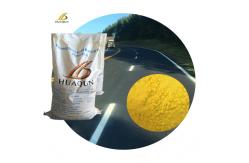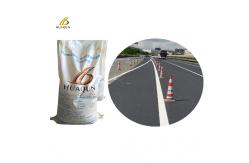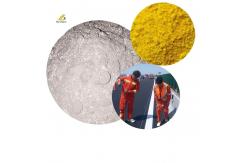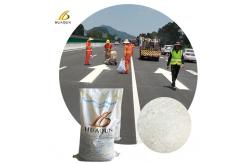Thermoplastic Paint For Heavy-Duty And Industrial Surface Applications
|
White Yellow Reflective Pavement Thermoplastic Road Marking Coating Spray Application Thermoplastic Road PaintProduct Description
Thermoplastic Road Marking Paint is a durable, heat-activated paint applied to road surfaces to create clear, long-lasting traffic markings, such as lane lines, pedestrian crossings, symbols, and road signs. It is composed of a blend of resins, pigments, fillers, and glass beads, designed to ensure excellent visibility and resistance to wear and environmental conditions. Here's a more detailed description of its components, properties, and application: Components:1. Resins: These are the base material that gives the paint its structure. Common resins include alkyd, acrylic, and thermoplastic resins, which are chosen for their ability to bond strongly to road surfaces and form a hard, durable layer once cooled. 2. Pigments: These provide color to the road markings. White and yellow are the most common pigments, though other colors can also be used depending on the marking requirements. 3. Fillers: These are inert materials used to bulk up the paint and help with the application. They often include limestone, calcium carbonate, or other fine powders. 4. Glass Beads: Tiny glass beads are embedded into the surface of the thermoplastic marking. These beads enhance the retroreflectivity of the paint, meaning they reflect light back towards the source (e.g., headlights from vehicles) for improved visibility at night or in low-light conditions. Key Features:1. Heat-Activated: Thermoplastic paint is applied in a molten form, typically heated to a temperature between 375°F to 400°F (190°C to 204°C). It is spread onto the road surface and immediately hardens upon cooling, forming a solid, durable coating. 2. Durability: Once applied, thermoplastic paint creates highly resistant markings that can withstand wear from traffic, environmental factors like rain and sunlight, and abrasion from tires. It is particularly effective in areas with heavy traffic. 3. Fast Drying Time: Since it hardens quickly upon cooling, thermoplastic paint allows roads to be reopened to traffic sooner compared to other types of road marking paints. This is a key benefit for high-traffic areas or where lane closures need to be minimized. 4. Retroreflectivity: The glass beads embedded in the paint provide a reflective surface that improves visibility, particularly in low-light conditions such as nighttime driving or during poor weather. This enhances safety by making road markings more visible to drivers. 5. Weather Resistance: Thermoplastic markings are resistant to UV rays, rain, snow, and chemicals like oil and fuel, which means they maintain their color and visibility for longer than many other types of markings. 6. Thickness and Customization: Thermoplastic paint is often applied in varying thicknesses, depending on the traffic volume and marking requirements. Special formulations, such as thick-film thermoplastic paint, are available for areas with very heavy traffic or extreme wear. 7. Environmental Resistance: It can handle high temperatures and harsh weather conditions. Unlike other paints, thermoplastic markings do not fade or peel easily under UV exposure.
Detailed Process of Thermoplastic Marking Paint Construction
1. Road Cleaning
Before operation, the nearby area must be cleaned to ensure that there are no impurities such as oil, water, fallen leaves, weeds, ect., so as not to affect the adhesion effect, flatness and reflection effect of the line.
2. Set the Point and Mark Line
In the process of sampling, the calculation and measurement must be carried out in strict accordance with the construction drawings. Measure the several lanes that need to be drawn on the road, set the point, and then mark it with a stone pen. Use titanium dioxide powder to glue the rope for the elastic line. After the rope is removed, it will be corrected and improved to ensure that the line shape is clear and accurate.
3. Apply the Primer
The lower coating is a common binder in hot melt marking construction. It is applied to the highway road surface, which can make the hot melt coating better adhere to the road surface.
4. Spray the Paint
Before construction, first check the relevant coating equipment. Then heat the paint.
When the trolley moves forward, the paint will form a coating film on the road, and a layer of glass beads should be sprinkled on the coating film during the coating process. When the trolley moves forward, take the reference line as the ruler, control the thickness and width of the line, and ensure the coordination, clarity and smoothness of the line connection between the straight line and the curve.
Note: During the coating process, in order to avoid the sedimentation and separation of the paint, it is necessary to stir the paint frequently.
5. Check and Correct After the coating is completed, check and correct the line shape, check the spread of glass beads, etc. After confirming that it is correct, the construction site will be cleaned up.
After the line is dried and hardened, the relevant construction equipment can be transferred, the safety facilities can be dismantled, and the traffic can be opened.
Advantages of Thermoplastic Road Paint
The advantages of hot melt marking paint are as follows: Strong adhesion and durability
Technical Specification
|
|||||||||||||||||||||||||||||||||||||||||||||||||||||||||
| Product Tags: Industrial Surface Thermoplastic Paint Yellow Industrial Surface Paint Heavy Duty Thermoplastic Paint | |||||||||||||||||||||||||||||||||||||||||||||||||||||||||
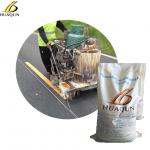
|
Guangzhou Factory Road Mark Paint White Road Line Paint |
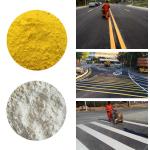
|
Thermoplastic Road White And Yellow Traffic Line Paint High Reflective for Road Marking |
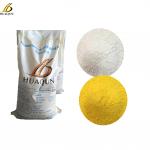
|
Thermoplastic Road Mark Paint High Reflective White and Yellow for Road Sign |
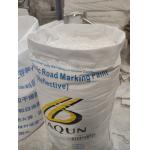
|
Export hot-melt /Thermoplastic white yellow Powder Thermoplastic Road Painting made in China |
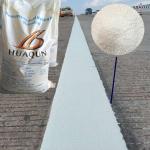
|
Thermoplastic Hot Melt Paint High Reflective White and Yellow Road Marking Paint |
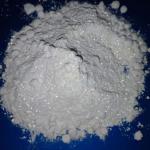
|
High Reflective White and Yellow Thermoplastic Road Marking Materials Hot Melt Paint |

